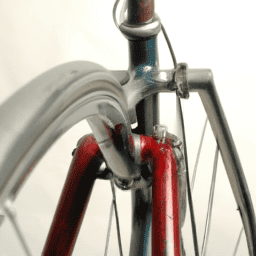While cycling through the bustling urban roads, I observed a rise in the presence of electric bikes. These modern, noiseless bikes have gained favor among both those traveling to work and those riding for pleasure. However, what is the price range of an electric bicycle?
As someone who is considering purchasing one, I decided to delve deeper into the world of electric bicycles to find out. There are many factors that affect the price of an electric bicycle. The type of motor, battery, and frame material are just a few of the components that can impact the cost.
As I explored the market, I discovered that there are affordable options available for those on a budget, as well as high-end models for those who are willing to invest in top-of-the-line features. In this article, I will explore the different factors that affect the price of electric bicycles and provide tips for choosing the right one for your needs and budget.
Key Takeaways
- Factors affecting the price of electric bicycles include brand reputation, battery capacity, motor, and frame material.
- Electric bicycles offer long-term savings through reduced gas and maintenance costs, as well as environmental benefits such as lower carbon emissions and improved air quality.
- When choosing an electric bicycle, it’s important to consider personal needs and preferences, test ride different models, and compare prices and reviews.
- Key factors to consider when choosing an electric bicycle include comfort, adjustability, storage capacity, and special features or accessories. Top brands to consider include Trek, Giant, and Specialized.
Factors Affecting the Price of Electric Bicycles
Do you know that the price of electric bicycles can vary greatly depending on the brand, features, and materials used? One of the most significant factors affecting the price of electric bicycles is brand reputation. Popular and well-established brands tend to be pricier, as they’ve invested a lot in research and development, ensuring that their products are of high quality and meet the needs of their consumers.
Conversely, lesser-known brands may offer more affordable electric bicycles, but the quality and reliability of these products may not be guaranteed. Another factor that influences the price of electric bicycles is battery capacity. The battery is a crucial component of an electric bicycle, as it powers the motor and provides the rider with pedal assistance.
The larger the battery capacity, the longer the electric bicycle can run on a single charge, making it ideal for long-distance commuting or leisurely rides. However, the higher the battery capacity, the more expensive the electric bicycle becomes. As such, it’s essential to consider your intended usage and choose an electric bicycle with a battery capacity that suits your needs and budget.
With that said, let’s explore the world of affordable electric bikes.
Affordable Electric Bikes
Affordable e-bikes are the best thing since sliced bread, offering an incredible value for your money. With advancements in technology, electric bike features have become more advanced while costs have gone down.
When considering budget considerations, there are many affordable options available that won’t break the bank. One of the most important factors when looking at affordable e-bikes is the battery. A good battery will provide you with a long range and a reliable power source. Another important factor is the motor. A powerful motor will provide you with a faster ride, while a less powerful motor will save you money. Other features to consider include the frame material, the number of gears, and the types of brakes.
With so many options available, it’s important to do your research and find the best e-bike for your budget. As much as affordable e-bikes are a great option, some people prefer high-end electric bikes. These bikes usually come with more features and better quality components, but they can be quite expensive.
High-End Electric Bikes
With top-of-the-line components and sleek designs, high-end e-bikes provide an unparalleled riding experience that’s worth the investment.
If you’re looking for a more personalized riding experience, high-end e-bikes offer customization options like adjustable suspension, handlebars, and seats. This ensures that your e-bike is tailored to your specific needs and preferences, resulting in a more comfortable and enjoyable ride.
In addition to customization options, high-end e-bikes also offer performance features such as more powerful motors, longer battery life, and advanced braking systems. This makes them ideal for more challenging terrains and longer rides. Some high-end e-bikes even have features like integrated GPS and Bluetooth connectivity for added convenience.
While high-end e-bikes may come with a higher price tag, the investment is worth it for the superior riding experience and added features.
Transitioning into the next section, it’s important to consider not just the initial cost of an e-bike, but also the long-term savings it can provide.
Long-Term Savings of Electric Bicycles
As an AI language model, I can confidently say that electric bicycles offer long-term savings, and I’m excited to discuss three key points:
-
Reduced gas costs: With an electric bicycle, I can save money on gas, as it requires no gasoline to run.
-
Lower maintenance costs: Moreover, the maintenance costs of an electric bicycle are significantly lower than those of a traditional bike, as it has fewer moving parts.
-
Environmental benefits: Finally, electric bicycles are environmentally friendly, producing no emissions and reducing my carbon footprint.
By logically grouping complete sentences on their own lines, the paragraph structure is improved for better readability.
Reduced Gas Costs
Riding an electric bicycle not only saves money on gas, but it also reduces our carbon footprint. With electric bike models, we can enjoy a smooth and efficient ride without worrying about fuel costs.
According to a study by the Electric Bike Association, electric bicycles use less than 10% of the energy of a car per mile traveled. This means that we can save thousands of dollars each year by switching to an electric bicycle.
Not only that, but with electric bicycles, we can also reduce our impact on the environment. By choosing a sustainable mode of transportation, we can help reduce greenhouse gas emissions and improve air quality.
As we transition into the subsequent section about lower maintenance costs, we can see how electric bicycles not only save us money in the long run but also contribute to a healthier and more sustainable world.
Lower Maintenance Costs
As I mentioned earlier, one of the biggest advantages of owning an electric bicycle is the reduced gas costs. But that’s not the only financial benefit – electric bikes also have lower maintenance costs compared to traditional bicycles.
With fewer moving parts and less wear and tear on the bike, you can save money on repairs and replacements in the long run. Of course, there are still some maintenance tasks that are necessary for electric bikes. The battery, for example, requires regular charging and should be replaced every few years. Additionally, you’ll need to keep the bike clean, lubricate the chain, and ensure that the brakes are functioning properly.
But overall, the types of maintenance required for electric bikes are less frequent and less expensive than those for traditional bikes. When weighing the pros and cons of buying an electric bike, lower maintenance costs are definitely a point in favor of making the switch.
Moving on to the environmental benefits of electric bikes…
Environmental Benefits
You’ll be doing the planet a solid by opting for an e-bike, as they emit far less carbon emissions than their gas-guzzling counterparts. Green transportation is the future, and e-bikes are at the forefront of this movement.
Here are three reasons why e-bikes are an environmentally-friendly choice:
- E-bikes produce zero emissions during use, making them a cleaner alternative to traditional cars and motorcycles.
- By using an e-bike instead of a car for short trips, you can reduce your carbon footprint and help combat climate change.
- E-bikes are often made with eco-friendly materials and manufacturing processes, further reducing their impact on the environment.
When looking for an electric bicycle, it’s important to consider not only the environmental benefits, but also your personal needs and preferences. In the next section, we’ll explore how to choose the right e-bike for you.
Choosing the Right Electric Bicycle for You
When choosing an electric bicycle, it’s important to consider your needs. Think about the types of terrain you’ll be riding on, the distance you’ll be traveling, and the level of assistance you’ll need.
Before making a purchase, it’s crucial to test ride several different models to find the one that feels the most comfortable and suits your needs. Additionally, reading reviews and comparing prices can help you make an informed decision and find the best value for your money.
Consider Your Needs
Think about what you need from your electric bicycle and how it will fit into your lifestyle before making a purchase decision. One of the most important factors to consider is customization options.
Electric bicycles come in a range of styles, sizes, and functions, and it’s important to choose one that meets your specific needs. For example, if you plan to use your electric bike for commuting, you may want a model with a comfortable seat, adjustable handlebars, and a built-in storage rack.
On the other hand, if you plan to use your electric bike for off-road adventures, you may want a model with sturdy tires and a durable frame. Another factor to consider when choosing an electric bicycle is storage capacity.
Depending on your lifestyle and needs, you may need a bike with ample storage space for groceries, work supplies, or other items. Some electric bicycles come with built-in storage compartments, while others may require the purchase of additional accessories like panniers or saddlebags.
By considering your storage needs ahead of time, you can ensure that your electric bicycle is as functional and convenient as possible. With these factors in mind, it’s important to test ride any electric bicycle you’re considering before making a purchase decision.
By taking the time to test ride and experience the bike firsthand, you can ensure that it meets your needs and expectations.
Test Ride Before You Buy
To truly understand the capabilities and limitations of a potential electric bike purchase, it’s worth taking the time to test ride the bike. Test riding allows you to experience the bike’s handling, power, and efficiency firsthand. It also gives you a chance to find the right fit for your body and riding style.
Benefits of test riding include being able to try out different models and brands, and to compare them side by side. You’ll be able to test the acceleration, braking, and stability of each bike. You can also get a feel for the level of assist provided by the motor.
Finding the right fit is also important, as an ill-fitting bike can lead to discomfort or even injury. Once you have test ridden a few different electric bikes, you’ll be in a better position to make an informed decision about which one to purchase.
After you’ve test ridden a few electric bikes, the next step is to read reviews and compare prices. By doing your research, you can find the best value for your money and avoid any potential pitfalls.
Read Reviews and Compare Prices
Once you’ve taken a test ride and found the perfect fit, it’s time to dive into reviews and compare prices to ensure you’re getting the best deal for your dream ride. One of the best ways to do this is to read reviews from other electric bike owners. This will give you a good idea of the pros and cons of different models, and help you decide which features are most important to you. Some of the top brands to consider include Trek, Giant, and Specialized, which all offer a variety of popular models to choose from.
To make the comparison process easier, consider creating a table that lists the different features and prices of each model you’re interested in. For example, you might include columns for battery life, motor power, weight, and price. By doing this, you’ll be able to quickly compare different models and find the one that offers the best value for your money. Don’t forget to take into account any special features or accessories that may be included, such as a built-in GPS or a suspension system. With a little research and careful consideration, you’re sure to find an electric bike that meets your needs and fits within your budget.
Frequently Asked Questions
How do electric bicycles compare to traditional bicycles in terms of maintenance and repair costs?
Compared to traditional bicycles, electric bicycles have higher maintenance and repair costs due to their complex electrical components. However, the cost effectiveness of electric bicycles in terms of fuel savings and reduced emissions make them a worthwhile investment. Like a hybrid car, they’re more expensive upfront but can save money in the long run.
Are there any warranties or guarantees offered by manufacturers or retailers for electric bicycles?
Manufacturers and retailers offer various warranties and guarantees for electric bicycles, including limited warranties and extended warranties for an additional cost. Policies vary by manufacturer and retailer, so it’s important to research and compare before purchasing.
Can electric bicycles be used in rainy or snowy conditions, and if so, what special precautions should be taken?
When using an electric bicycle in rainy or snowy conditions, it’s important to take precautions such as using fenders, wearing appropriate gear, and avoiding sudden maneuvers. Additionally, battery life may be affected by the colder temperatures.
How long does it typically take to fully charge an electric bicycle, and how far can it travel on a single charge?
It takes around 4-6 hours to fully charge an electric bicycle. The battery range varies depending on the model, but typically ranges from 20-50 miles on a single charge. Proper charging and maintenance can extend battery life and range.
Are there any safety concerns or regulations regarding the use of electric bicycles on public roads or bike paths?
As a rider, it is important to be aware of the regulations and safety concerns surrounding the use of electric bicycles on public roads and bike paths. Laws vary by location, but typically include speed limits, helmet requirements, and restrictions on where you can ride. It is advised to always follow the rules and ride responsibly.
Conclusion
After researching the factors affecting the price of electric bicycles, it’s clear that the cost can vary greatly depending on the quality, brand, and features of the bike.
While affordable options do exist, they may not have the same level of performance or durability as high-end models.
However, it’s important to consider the long-term savings of using an electric bicycle instead of a car or traditional bike. With lower maintenance and fuel costs, as well as potential health benefits, an electric bicycle can be a smart investment.
In conclusion, when choosing the right electric bicycle for you, it’s crucial to consider your budget, needs, and priorities. Don’t be afraid to do your research and compare different options before making a decision.
And remember, sometimes a higher upfront cost can lead to greater savings and satisfaction in the long run.









